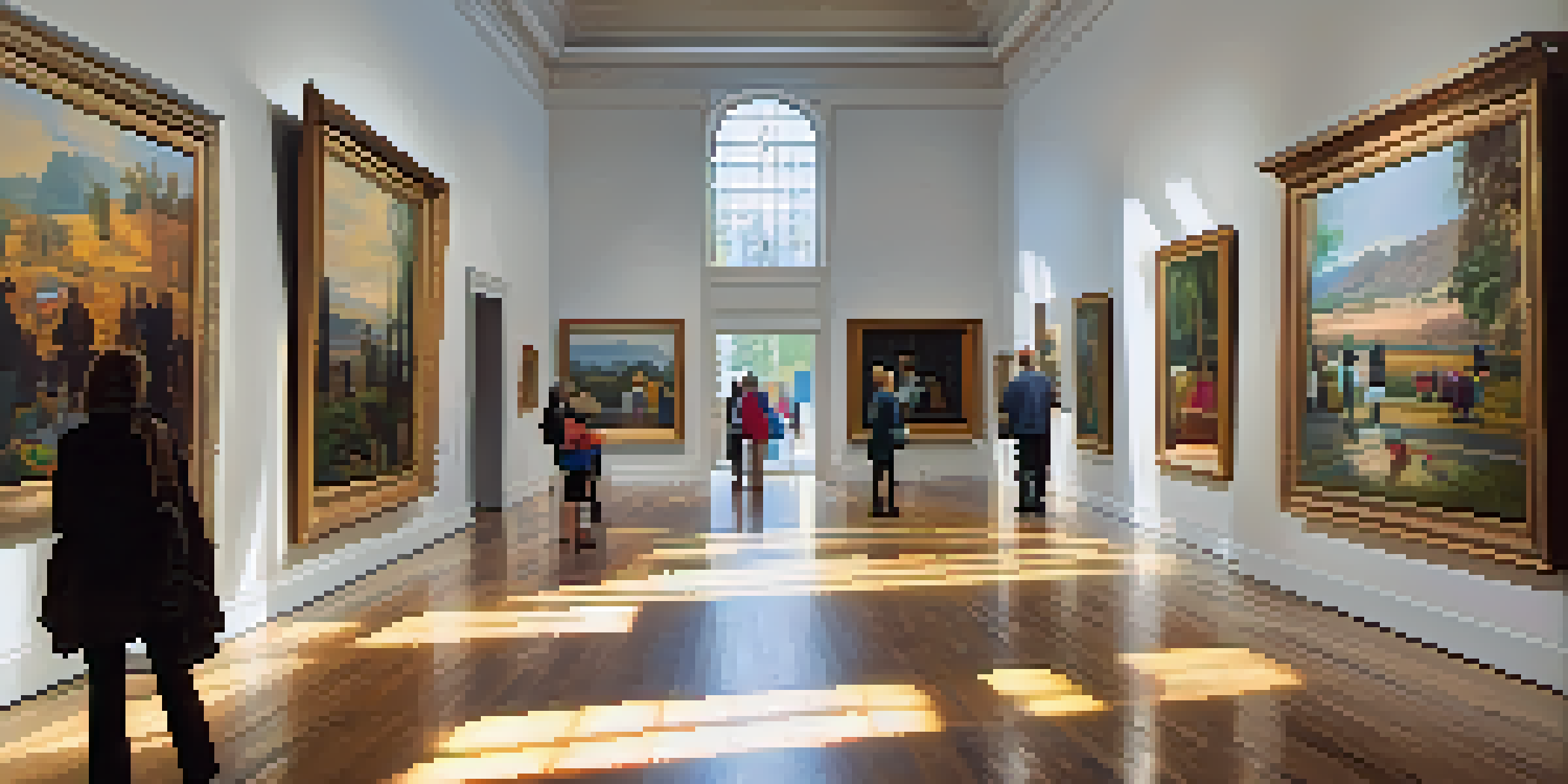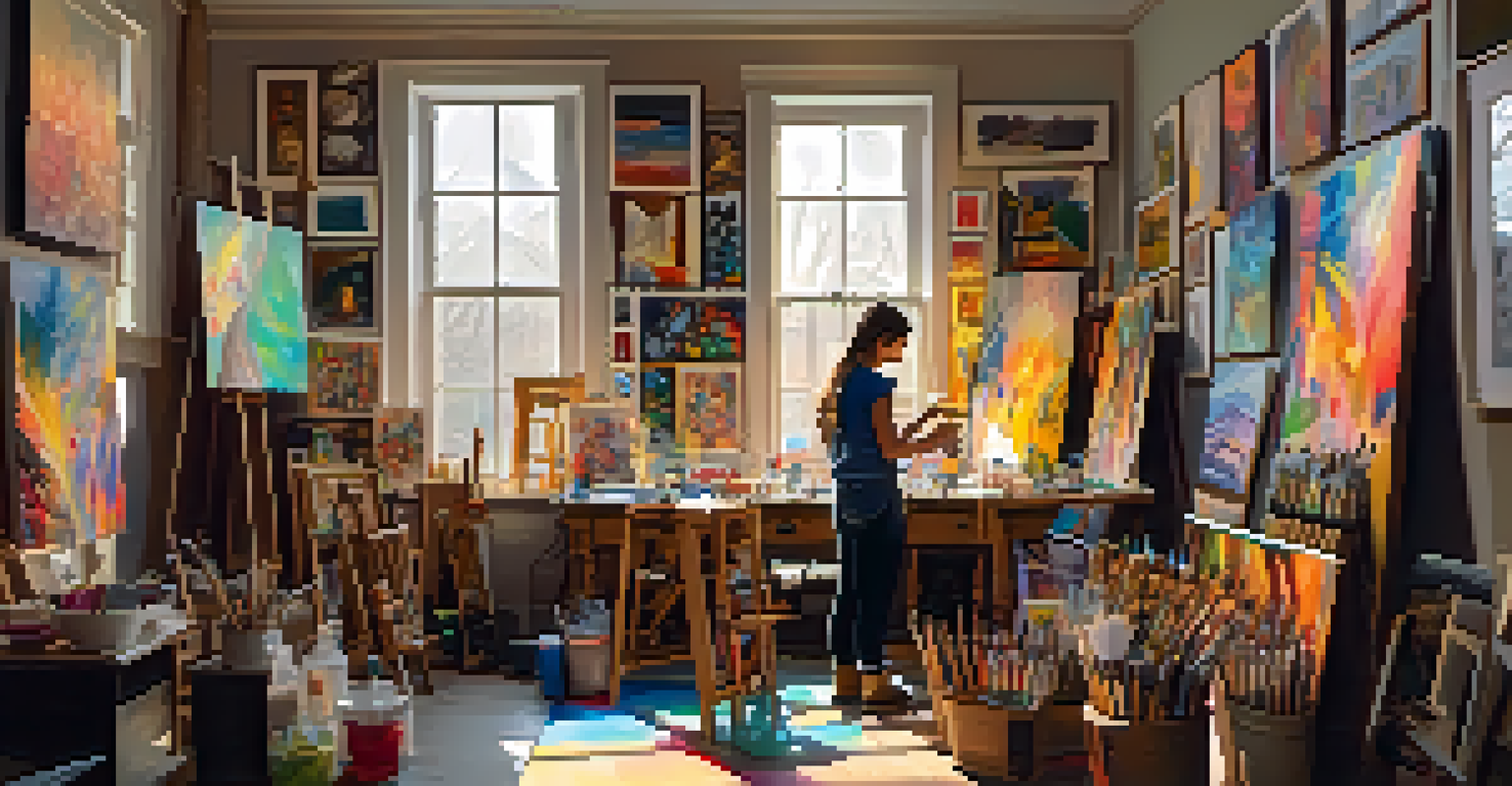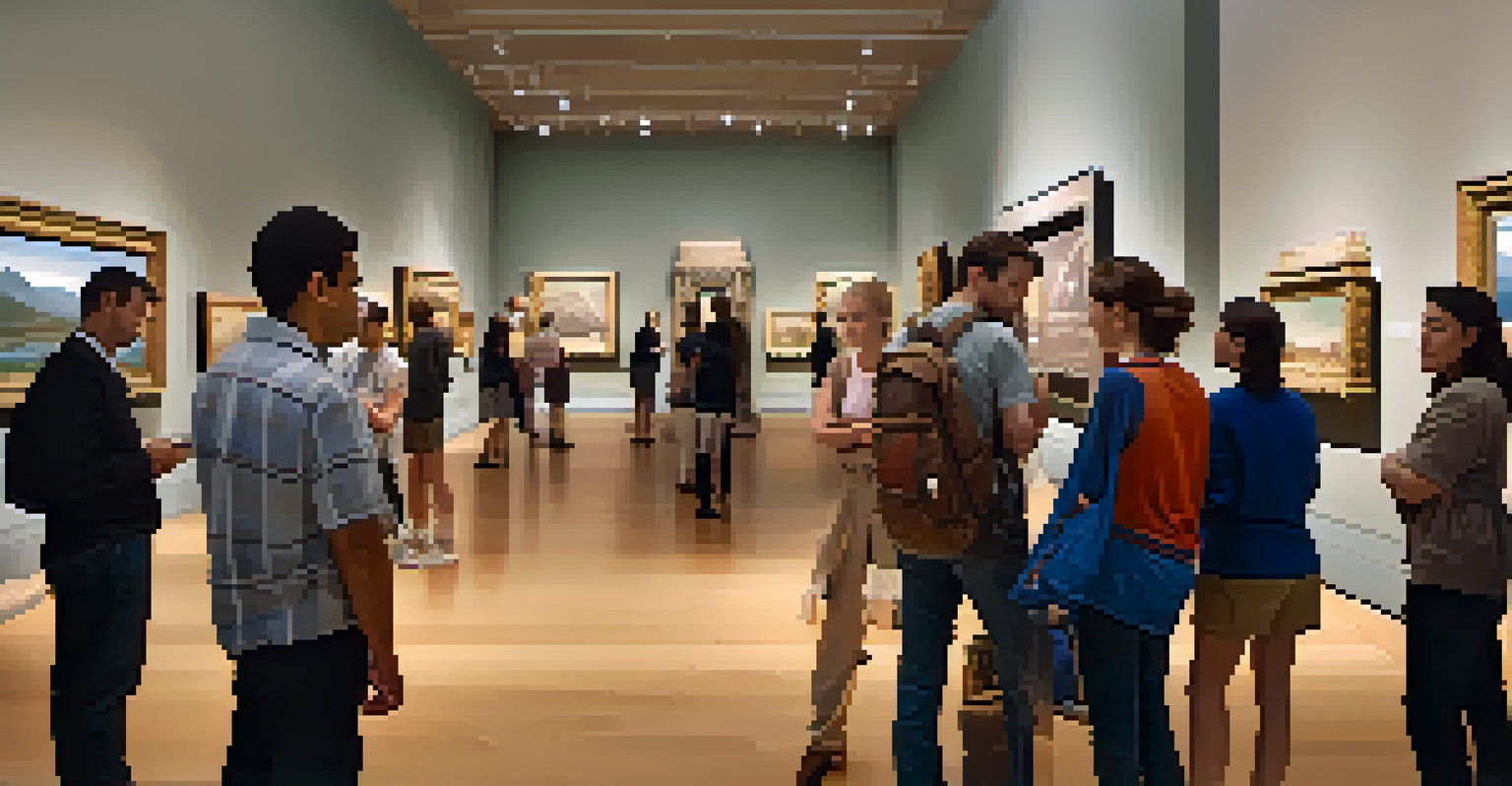The Role of Museums in Shaping Artistic Travel Experiences

Museums as Cultural Beacons for Travelers
Museums serve as gateways to understanding different cultures and histories. They allow travelers to connect with the local environment through art and artifacts, making a destination feel more relatable and immersive. For instance, visiting the Louvre in Paris isn't just about seeing the Mona Lisa; it's about experiencing French history and culture through its vast collection.
Museums are not just places to see art; they are places to understand it.
By showcasing local artists and their work, museums can highlight the unique characteristics of a place, drawing visitors into its narrative. This connection can inspire travelers to explore beyond the typical tourist spots, diving deeper into the local community. Ultimately, it transforms a simple trip into a more meaningful journey.
In many ways, museums are like a cultural compass for travelers, guiding them through the stories and traditions of a region. They help broaden perspectives, fostering appreciation for diversity and creativity. This enriched understanding forms the foundation of a more artistic and thoughtful travel experience.
The Transformative Power of Art in Travel
Art has an incredible ability to evoke emotions and provoke thoughts, and museums harness this power beautifully. When travelers encounter a piece of art that resonates with them, it can change their perspective on both the destination and their own lives. This transformational experience is often what makes travel unforgettable.

For example, a visitor to the Guggenheim in New York may find themselves inspired by modern art, leading them to explore their own creativity or seek out similar experiences elsewhere. Such moments create lasting memories and encourage travelers to seek out more artistic encounters in their future journeys.
Museums Foster Cultural Connections
Museums provide travelers with a deeper understanding of local culture and history through art and artifacts.
The emotional connections forged through art can also foster a sense of belonging among travelers. Engaging with local art can lead to discussions, shared experiences, and connections with others who appreciate the same beauty. This sense of community is a powerful aspect of traveling and can deepen one's appreciation for the world.
Museums as Educational Hubs for Travelers
Beyond aesthetics, museums provide educational opportunities that enhance travel experiences. They offer guided tours, workshops, and lectures, giving visitors a chance to learn about the art, artists, and cultural significance behind the pieces on display. This added layer of knowledge transforms a visit from passive viewing to active learning.
Art is the most beautiful of all lies; it is a world of dreams and imagination, where everything is possible.
For instance, participating in a pottery class at a local museum can provide travelers with insights into age-old traditions and techniques. This hands-on experience fosters a deeper connection to the art and culture of the area, allowing for a more engaged form of travel. It’s like stepping into history and becoming a part of it.
Furthermore, museums often collaborate with local schools and organizations, bridging gaps between tourists and residents. This educational aspect not only enriches the travel experience but also promotes cultural understanding and appreciation, making the journey all the more rewarding.
Local Artists and Museums: A Symbiotic Relationship
Museums play a crucial role in supporting local artists by providing them with a platform to showcase their work. This mutual relationship benefits both the artists and travelers, as visitors get to experience authentic local culture while artists gain exposure and recognition. It’s a win-win situation that enriches the travel experience.
For example, many museums host rotating exhibitions featuring emerging artists, allowing travelers to discover new talent. This not only diversifies the artistic offerings but also helps travelers feel more connected to the local community. It’s a chance to see the soul of a place through the eyes of its creators.
Art Inspires Personal Growth
Experiencing art in museums can ignite creativity and motivate travelers to explore their own artistic expressions.
Moreover, purchasing artwork from local artists at museums supports the regional economy and promotes sustainability in the art world. Travelers who invest in local art leave with a tangible piece of their experience, often with a story attached, making their travel memories even more meaningful.
Museums as Platforms for Art Appreciation
Museums actively promote art appreciation by curating collections that tell compelling stories. By thoughtfully arranging exhibitions, they guide visitors through the evolution of artistic movements, styles, and techniques. This journey enhances the understanding of art and its relevance to society, enriching the travel experience.
When travelers walk through a museum, they’re not just looking at art; they’re witnessing the intersections of culture, history, and innovation. This layered understanding encourages deeper conversations about art, fostering appreciation that travelers can carry with them long after their visit.
Furthermore, many museums offer resources such as audio guides and interactive displays, making art more accessible to everyone. This democratization of art appreciation invites a wider audience to engage with creative expressions, making the experience inclusive and enriching.
The Role of Technology in Enhancing Museum Experiences
In today’s digital age, technology plays a significant role in shaping how we experience museums while traveling. Virtual reality tours, interactive exhibits, and mobile apps offer new ways for travelers to engage with art and culture. This tech-savvy approach can make museum visits more dynamic and accessible.
For instance, augmented reality can bring static exhibits to life, offering deeper insights into historical contexts and artistic techniques. Such innovations not only captivate tech-inclined travelers but also bridge generational gaps, making museums appealing to a broader audience.
Education Enhances Travel Experiences
Museums offer educational opportunities, like workshops and guided tours, that transform visits into active learning experiences.
Additionally, social media platforms allow travelers to share their museum experiences in real-time, creating a sense of community and encouraging others to explore. This sharing aspect can enhance the overall travel experience by connecting individuals with similar interests and sparking conversations about art and culture.
Museums: A Source of Inspiration for Future Artists
Museums often serve as a source of inspiration for budding artists, igniting their creativity with exposure to diverse artistic styles and techniques. When travelers see the work of established artists, it can motivate them to express their own creativity, whether through painting, photography, or writing. It's like planting a seed that can grow into something beautiful.
For example, a young artist visiting the Tate Modern may feel inspired to experiment with abstract forms after witnessing the works of renowned contemporary artists. This inspiration can lead to personal growth and exploration, encouraging travelers to incorporate their experiences into their creative pursuits.

Moreover, many museums offer workshops and artist talks that provide aspiring creatives with guidance and mentorship. This nurturing environment not only fosters talent but also builds a community of like-minded individuals who share a passion for art. The ripple effect of inspiration can resonate far beyond the museum walls.